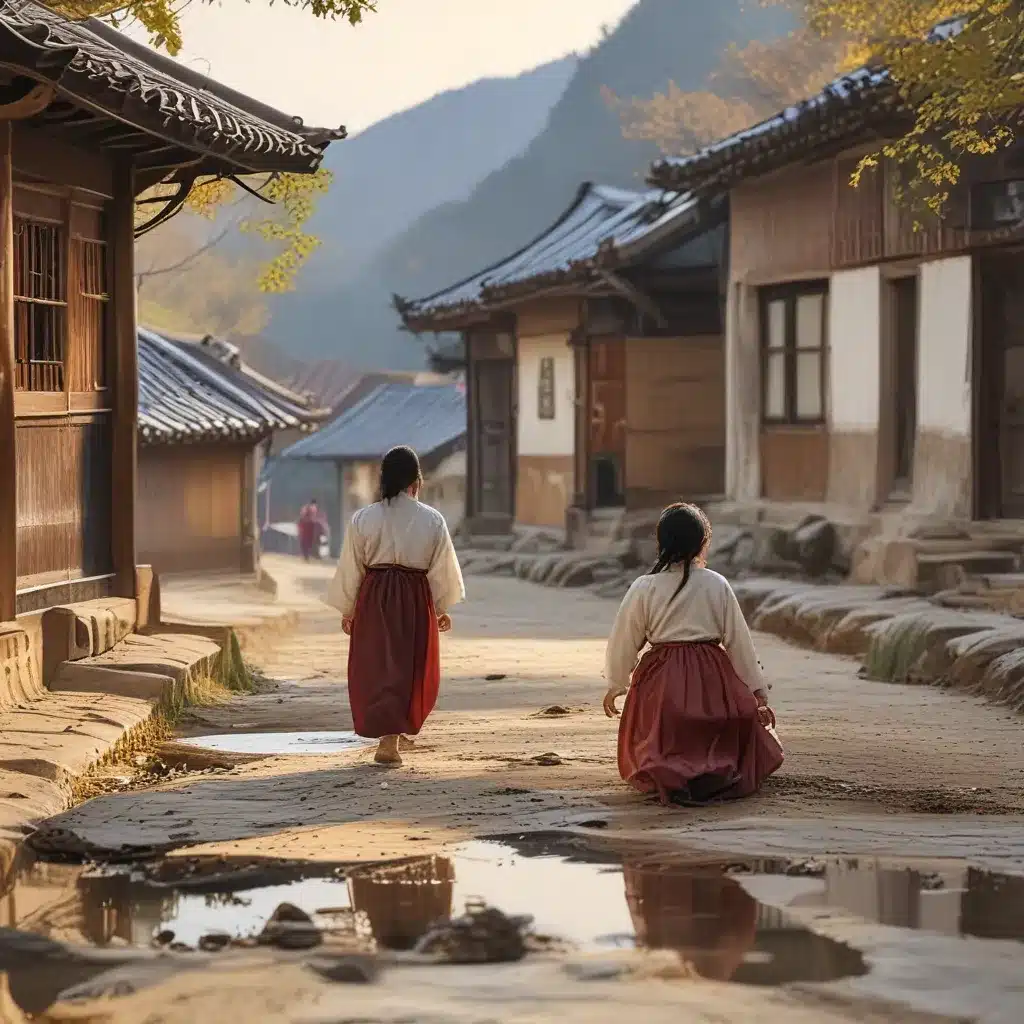
Uncovering the Charm of Korean Folk Culture
As I stepped off the bus and onto the grounds of the Korean Folk Village, a sense of wonder and curiosity immediately enveloped me. The vast expanse of traditional tiled-roof houses, towering totem poles, and captivating performances promised an immersion into the heart of Korean culture that I had only glimpsed in passing.
My journey to this enchanting destination, located just an hour’s drive from the bustling streets of Seoul, had been a long time coming. Ever since I had stumbled upon awe-inspiring images of South Korea’s scenic countryside villages, I knew I had to experience their timeless allure for myself. And now, as I gazed upon the serene landscape, I couldn’t help but feel a surge of excitement for the adventures that lay ahead.
Exploring the Grandeur of the Korean Folk Village
The Korean Folk Village, or Gyeonggi Province’s Yongin City, is a sprawling outdoor museum that transports visitors back in time to the late Joseon era. As I ventured through the winding paths, I was struck by the sheer scale and authenticity of the village. Each building, from the Seowon Confucian Institute to the traditional scholar’s house, was a meticulously crafted replica of its historical counterpart, allowing me to immerse myself in the cultural heritage of the region.
One of the first things that caught my eye was the overwhelming presence of school children, their youthful energy and enthusiasm a testament to the importance of preserving Korea’s rich traditions. I couldn’t help but smile as I watched the young students enthusiastically reenacting historical punishments, their laughter and playfulness a delightful contrast to the somber subject matter.
As I continued my exploration, I stumbled upon the charming swing area, where I couldn’t resist the temptation to join the carefree schoolchildren in experiencing the simple joys of traditional Korean amusements. Swinging high, with the wind in my hair and the laughter of my fellow adventurers ringing in my ears, I felt a deep connection to the timeless spirit of the village.
Discovering the Rhythms of Korean Folk Performances
The true highlight of my visit, however, came with the series of captivating performances that showcased the diverse talents of Korean folk culture. From the dynamic Farmers’ Music and Dance Performance to the heart-stopping Acrobatics and Tightrope display, each act left me in awe of the skill and artistry of the performers.
As I watched the acrobats defy gravity with their death-defying stunts, I couldn’t help but hold my breath, my eyes wide with wonder. The sheer athleticism and precision of their movements, combined with the traditional Korean music that provided the backdrop, created a mesmerizing spectacle that transported me to a world of bygone eras.
Equally enthralling was the Equestrian Feat, where skilled horsemen showcased their mastery of the majestic steeds. The thunderous sound of hooves against the dirt, the graceful movements of the riders, and the infectious energy of the performance all contributed to an unforgettable experience that left me with a newfound appreciation for the equestrian traditions of Korea.
Immersing Myself in the Everyday Life of a Traditional Korean Village
But the Korean Folk Village was more than just a stage for grand performances; it was a living, breathing testament to the everyday lives of the Korean people during the Joseon dynasty. As I wandered through the various sections of the village, I couldn’t help but marvel at the ingenious engineering and craftsmanship that went into the construction of the buildings and implements.
The water-powered mill, for instance, was a true testament to the innovative spirit of the Korean people, harnessing the natural flow of water to reduce human labor and increase efficiency. Similarly, the traditional earthenware onggi vessels, used for fermenting and storing food, demonstrated the deep-rooted traditions and practical wisdom that have been passed down through generations.
Perhaps the most poignant moments, however, came when I had the chance to step inside the traditional thatched-roof houses, where I could almost feel the ghosts of the past lingering in the air. The worn floors, the intricate woodwork, and the simple yet elegant furnishings all served as a powerful reminder of the lives that had once unfolded within these walls, and the rich tapestry of culture that had been woven into the fabric of this community.
Connecting with the Heartbeat of Korean Tradition
As my time at the Korean Folk Village drew to a close, I found myself overwhelmed by the depth of experience I had gained. What had started as a simple desire to explore the picturesque countryside had transformed into a profound connection with the very essence of Korean culture and tradition.
In a world that often moves at a dizzying pace, the Korean Folk Village had provided me with a much-needed respite, a chance to slow down and immerse myself in the rhythms of a bygone era. And as I boarded the bus back to Seoul, I couldn’t help but feel a sense of gratitude for the opportunity to have witnessed the enduring spirit of Korea’s cultural heritage.
Perhaps the greatest lesson I took away from my visit was the realization that true authenticity can still be found, even in an age of rapid modernization. The Korean Folk Village had managed to preserve the timeless charm of its traditional roots, offering visitors a glimpse into the heartbeat of Korean tradition that continues to thrive, even in the face of an ever-changing world.
As I reflect on my experience, I can’t help but encourage anyone visiting Seoul, South Korea to make the journey to the Korean Folk Village. It is a place that not only captures the essence of Korean culture but also has the power to transport you to a world of wonder and enchantment, where the past and present coexist in perfect harmony.

